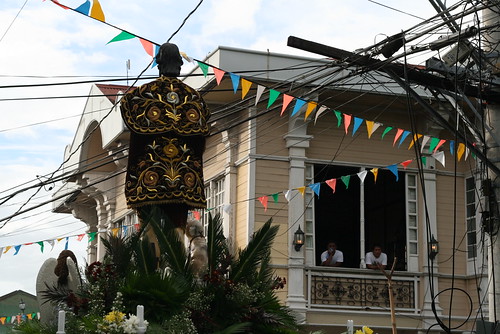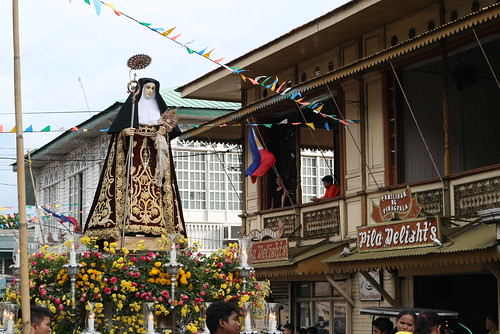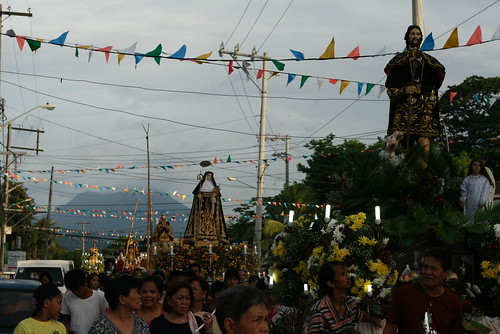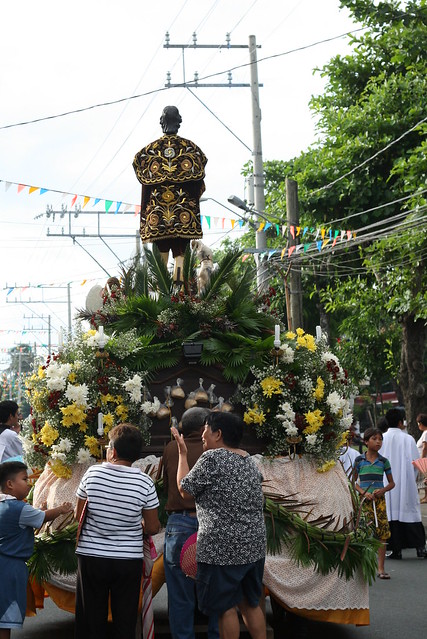There's Mario Maurer Fever abound in the Philippine Archipelago... the pinoy teen masses have been introduced to the multi-racial cutie from Thailand over the weekend after ABS-CBN premiered the movie Crazy Little Thing Called Love. This time, The Barefoot Baklesa shall share with thee the movie that skyrocketed Mario Maurer into fame a few years ago: The Love of Siam.
~Oh yeah, beware the spoiler alert


I just couldn't shake it off... I have been watching this movie or a part of it,everyday this past month...
I've written some sort of review on The Love of Siam a while ago, but I felt that it was a bit inadequate with the kind of impact it had on me. I would like to thank joey torres for the mp4 file and strangerinsiamsquare for sharing the musical score and OST.
So, here we go...
I first learned about The Love of Siam [ Rak Haeng Sayam] after seeing another film called Bangkok Love Story. I think it was at the G4M Forums when they were discussing the latter that i stumbled upon it. I really didn't have anything to do that night, and thank the gods for wireless technology, I was able to watch it; and there was no turning back since.
I will have to admit, at first, I didn't really like it that much. I felt it was too melodramatic at times. But it does hit some chords right as per the emotional key of the scenes in the storytelling.
On the outside, seeing the way the movie was promoted in 2007, The Love of Siam seems to be one of those run of the mill teen romance movies. But at the core of this film lies a love story between two boys. Much to the surprise of the Thai audience a year ago. Well, I guess the Filipinos and the Thais really have the same mindset that gay characters must be effete, cross-dressing, and funny. Notice that every gay role commercially viable gay role written has to be the animated effeminate and people will find that amusing [ and don't use Brokeback Mountain as an example to the contrary because that i just plain crappy ].
But unlike the usual formulaic teen romances that only want to sell the "kilig" moments, LOS bears a sort of balance to the other relationships and subplots that are woven around the two leads.
LOS is the story of Mew and Tong, who were neighbors when they were young boys. Mew, a stubborn and introverted child living with his grandmother, finds a friend in Tong who is as a boy their age should be; playful and outgoing.
At what seems to be their happiest as children, Tong makes Mew hunt for his Christmas present, a woodblock sculpted christmas doll, which by some unfortunate circumstance would be missing its nose.
What I also found appealing in the storytelling is the dimension and contrast of their family structures. Mew lives with a spinster aunt and his beloved grandmother while across the street Tong is part of a Catholic household with his teenage sister Tang and parents Korn and Sunee [not what you would normally expect from a predominantly buddhist population]. I remember going, "Oh...they're catholic..."
For there is a tendency for some gay themed films to abstain from the parental dimensions of their relationships. Because perhaps, in this reality, having distant and un accepting parents reflect the cinematic view that their story is not worth telling.
When Tang goes missing during a trip in Chiangmai, Tong's family is forced to deal with the loss when there seemed to be no hope of finding her by moving away. Goodbyes are tough, and Mew would rather not deal with it. And as stories must, time passes...
But a chance encounter reunites Mew and Tong some years after during their late teens. Mew [played by Witwisit Hiranyawongkul] is now the composer and lead singer for an upcoming band called August [which to my surprise is a band for real] while Tong [played by Mario Maurer] typifies a boy his age: with a pretty girlfriend, and is part of a somewhat popular clique.
But Tong's home life is far from typical. His father, Korn, depressed, then wastes himself into drinking after Tang's disappearance leaving Sunee to hold their family together.
As the boys' rediscovered friendship progresses, Mew's strong attachment towards Tong inspires him to write love songs. And the lyrics to one goes:
"If I say that I wrote this song for you,
would you believe me?
It might not be as well
written or beautiful like other songs.
I want you to know that a love song can't be written
if you're not in love.
But for you,
I can write this song so easily"
After hearing it for the first time, Mew tells Tong that without him in his life, that song would never be. Tong responds with a kiss -probably the most innocent and the most heartfelt kiss i have seen on film in my existence.
[and the music...oh the music in this movie needs to be commended. Whether it be the songs or the musical score. I don't know a word of Thai but the i have been humming the songs in my head -indeed, if it be the food of love, it's been blasting out of my earphones to a glutinous extent]
But in discovering themselves Mew and Tong find out how their own smalls worlds and the fragile hearts they bear would collide: Sunee asks Mew not to make Tong take the wrong path, Tong faces coming out to his friends, Mew at odds with his band endangering their debut, and Tong's father's deteriorating health.
And even against Sunee's insistence, you will love Tong for running out at night and screaming at Mew's window to let him in, but to no avail.
And when all seems lost, they learn that as long as there's love, naturally there's hope.
Perhaps the line that will define this movie is when Tong tells Mew,
"I can't be with you as your boyfriend. But that does not mean I don't love you."
Then Tong hands Mew the missing piece of the wooden doll he had gifted him when they were kids [one which he had a hard time acquiring]. And it hit me, just a few moments ago what that meant! That wherever life leads them, Tong leaves Mew with some hope...That perhaps it may take a little longer for them, and like that wooden doll missing its nose, somehow Tong would find a way to complete it, to complete their love.
And I can't believe I'm using this Theology 131- Marriage & Human Sexuality lesson to prove a point. "A genuine loving relationship must be able to exist with other relationships."
Tong and Mew take a step into their maturity by accepting that they can't take a "you-and-me-against-the-world" stand on their love. If indeed what they have is true, it will be a love that they shall be able to share with their loved ones, friends, and all.
LOS does not take into account the typical requirements of what makes up love story. It doesn't give you that "dancing under the starlight" ending expected of the genre nor does it leave you with a heavy heart even if the last you see is Mew in tears [The love I know well is this: "it does end in tears." And the writer/director, Chookiat Sakveerakul presented that with no romantic pretenses]. But LOS does leave its characters with a glimmer of hope.
And that "Love", whether it between boys and girls, boys and boys, girls and girls, parent and child, friend and friend, between you and your god, is transcendent and unending.
And to answer Mew's question, "If we can love someone so much, how will we be able to handle it the one day when we are separated?"
I would tell him this, something that Gabriel Marcel said, "To say 'I love you' is to say 'thou shalt not die'..."










































